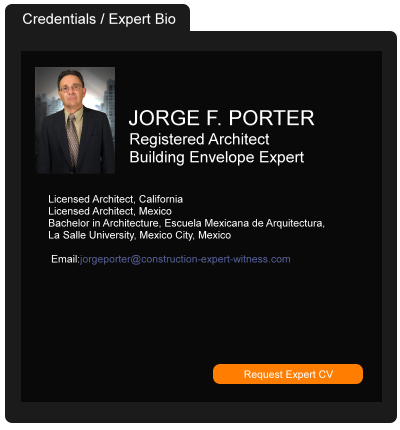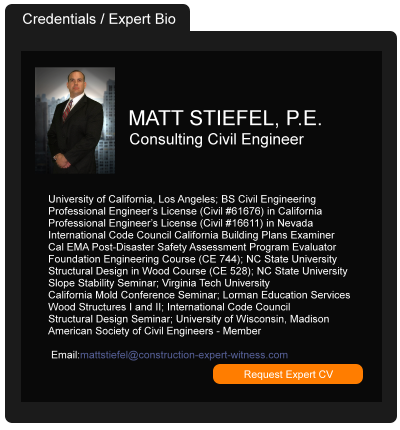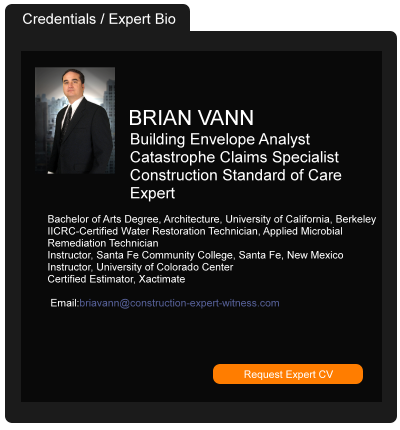Update Regarding New York City’s Climate Mobilization Act (CMA) and the Reduction of Carbon Emissions in New York City
July 05, 2021 —
Caroline A. Harcourt, Natalie S. Starkman & Nika Bederman - Gravel2Gavel Construction & Real Estate Law BlogIn a previous post, we described how the New York City Climate Mobilization Act, 2019 (the CMA, or Local Laws 92, 94, 95, 96, 97, and 147 enacted in 2019) was passed with the goal of reducing New York City’s carbon emissions by 40 percent by 2030 and by 80 percent by 2050 (as against a 2005 baseline as provided for in item 3 of Local Law 97). It is the most ambitious building emissions law to be enacted by any city in the world. The CMA impacts “Covered Buildings” (described below) and, besides contemplating the retrofitting of Covered Buildings to achieve energy efficiency and establishing a monitoring program for Covered Buildings, the CMA contemplates compliance by means of the purchase of carbon offset credits or renewable energy. (Note the new NYC Accelerator program, launched in 2012 by the Mayor’s Office of Sustainability, provides guidance regarding energy-efficient upgrades to properties and emission reductions.)
Pursuant to the CMA:
- Beginning in 2024, Covered Buildings will have to meet the first emission targets, which are calculated by multiplying the gross floor area of each Covered Building by the occupancy classification as set forth in Local Law 97; and
- In 2025, owners of Covered Buildings will need to establish compliance by submitting a report establishing such compliance (prepared by a certified design professional) to the newly created Office of Building Energy and Emissions Performance.
Read the court decisionRead the full story...Reprinted courtesy of
Caroline A. Harcourt, PillsburyMs. Harcourt may be contacted at
caroline.harcourt@pillsburylaw.com
Federal Magistrate Judge Recommends Rescission of Policies
February 12, 2024 —
Craig Rokuson - Traub LiebermanIn the recent case of Union Mut. Fire Ins. Co. v. 142 Driggs LLC, 2023 U.S. Dist. LEXIS 220393, Magistrate Judge Lois Bloom of the United States District Court for the Eastern District of New York recommended granting the insurer's default judgment and holding that of three policies issued to 142 Driggs LLC ("Driggs") be rescinded ab initio.
Driggs had represented on its insurance applications that it did not provide parking to anyone other than itself, tenants, and its guests at the subject insured premises. However, Union Mutual learned that Driggs had been renting out three garages to non-tenants. Second, Driggs represented that the mercantile square footage was around 1,000 square feet, when in actuality, it was larger than allowed under the policies.
Union Mutual provided underwriting guidelines in connection with its default motion, which state that "parking provided for anyone other than the insured, tenants and their guests," presents an "unacceptable risk." The guidelines also state that answering yes to any "preliminary application questions (which presumably included those regarding mercantile square footage and parking) is an "unacceptable risk." The court held that these guidelines supported a finding that Driggs made material misrepresentation and that Union Mutual relied on these misrepresentations in issuing the policies. The court, as such, recommended that the policies at issue be rescinded from inception.
Read the court decisionRead the full story...Reprinted courtesy of
Craig Rokuson, Traub LiebermanMr. Rokuson may be contacted at
crokuson@tlsslaw.com
Resolving Subcontractor Disputes with Pass-Through Claims and Liquidation Agreements
May 13, 2024 —
Stephanie Cooksey - Peckar & Abramson, P.C.Imagine a project where you are unable to reach final completion due to an unresolved subcontractor claim. If the project owner is responsible for the claim, and both the owner and subcontractor are entrenched in their positions, how would you resolve this dispute?
The default option is a three-party lawsuit where the subcontractor sues you in your capacity as general contractor. By denying the claim, you bring the owner into the lawsuit as a liable party to the subcontractor’s claim. This option is efficient from the judicial system’s perspective, as it means one lawsuit instead of two. The subcontractor cannot sue the owner since the two have no contract between them. Thus, the subcontractor’s recourse is limited to suing the contractor. In the three-party lawsuit, you argue that if the subcontractor prevails in its claim against you, the owner is liable. If the owner successfully defends against the claim, the subcontractor takes nothing.
Putting judicial economy aside, it may not make economic sense for contractors to have a lawyer involved in litigating a case where they have no skin in the game. Fortunately, there is a better option than the three-party lawsuit on multi-party construction projects.
Read the court decisionRead the full story...Reprinted courtesy of
Stephanie Cooksey, Peckar & Abramson, P.C.Ms. Cooksey may be contacted at
scooksey@pecklaw.com
Skyline Cockpit’s Game-Changing Tower Crane Teleoperation
August 21, 2023 —
Aarni Heiskanen - AEC BusinessIn
this episode of the AEC Business podcast, host Aarni Heiskanen interviews Zachi Flatto, CEO and co-founder of Skyline Cockpit. The startup offers a tower crane teleoperation, AI monitoring, and autonomous driving system. Zachi discusses the background of Skyline Cockpit, how they make construction safer and more efficient, and what technologies they use.
A ground-breaking change in crane operation
Zachi Flatto, the CEO and co-founder of
Skyline Cockpit, is leading a startup that specializes in providing advanced technology solutions for tower crane operations. The company’s main objective is to eliminate the need for crane operators to climb 100 meters every morning and spend long hours operating the crane from such heights. Zachi firmly believes that in 2023, this traditional practice is no longer necessary.
Read the court decisionRead the full story...Reprinted courtesy of
Aarni Heiskanen, AEC BusinessMr. Heiskanen may be contacted at
aec-business@aepartners.fi
Insurance Policy’s “No Voluntary Payment” Clauses Lose Some Bite in Colorado
October 22, 2013 —
Brady Iandiorio — Higgins, Hopkins, McLain & Roswell, LLC.The Colorado Court of Appeals recently handed down an opinion dulling the teeth of the “no voluntary payment” clauses found in many contractors’ insurance policies. In the case of Stresscon Corporation v. Travelers Property Casualty Company of America, 2013 WL 4874352 (Colo. App. 2013), the Court of Appeals found that an insured’s breach of the “no voluntary payment” clause does not always bar the insured from receiving benefits from its insurance company.
In July 2007, at a construction project run by Mortenson (the “GC”), a partially erected building collapsed, killing one worker and gravely injuring another. The collapse was caused by a crane hook pulling a concrete component off of its supports. The GC contracted with Stresscon Corporation (“Stresscon”) to build pre-cast concrete components for the project, and in turn Stresscon hired two sub-subcontractors, RMS and Hardrock (the “Crane Team”) to work together to erect those concrete components. Stresscon and the Crane Team had liability insurance, and Stresscon was insured by Travelers Property Casualty Company of America (“Travelers”).
The accident led to three separate lawsuits: 1) one brought by the deceased worker; 2) one brought by the injured worker; and 3) one brought by the GC against Stresscon claiming it was entitled to contract damages incurred because the project was delayed.
Read the court decisionRead the full story...Reprinted courtesy of
Brady IandiorioBrady Iandiorio can be contacted at
Iandiorio@hhmrlaw.com
EEOC Issues Anti-Harassment Guidance To Construction-Industry Employers
July 22, 2024 —
Christopher Kelleher & Andrew Scroggins - The Construction SeytSeyfarth Synopsis: The Equal Employment Opportunity Commission (“EEOC”) has issued guidance tailored to the construction industry regarding compliance with anti-harassment laws. This lines up with our prediction in early 2024 that the EEOC had put the construction industry squarely in its sights. The guidance is important for construction-industry leaders and employers to understand to prevent and remedy workplace harassment, and to avoid potential harassment liability.
On June 18, 2024, the EEOC issued its
Promising Practices for Preventing Harassment in the Construction Industry. This guidance provides key recommendations that construction-industry leaders and employers should consider implementing to prevent and address harassment in the workplace, and avoid being the target of the EEOC’s enforcement efforts. The guidance is intended to supplement the EEOC’s
Strategic Enforcement Plan (“SEP”) for fiscal years 2024-2028, which provides direction on the EEOC’s current objectives, principles, and enforcement efforts – among them, increasing diversity in the construction industry and remedying harassment. (We’ve written previously about the
proposed and
final SEP.)
Reprinted courtesy of
Christopher Kelleher, Seyfarth and
Andrew Scroggins, Seyfarth
Mr. Kelleher may be contacted at ckelleher@seyfarth.com
Mr. Scroggins may be contacted at ascroggins@seyfarth.com
Read the court decisionRead the full story...Reprinted courtesy of
Effective Strategies for Reinforcing Safety Into Evolving Design Standards
July 02, 2024 —
Ethan Harris - Construction ExecutiveFrom design/build condos to built-to-suit warehouses, one factor remains the highest priority regardless of the project type—the approach to upholding the highest level of safety. Safety exists as a core value across all areas of the construction industry, but the increased risk of serious injuries or fatalities persists. Ranked fourth on the United States Bureau of Labor Statistics’ list of occupations with the most fatality rates, construction workers put their lives in danger each time they step onto the jobsite.
Considering this risk, it’s important for every team member—from subcontractors to superintendents—to take responsibility for safety compliance, empowering their workforce to take ownership of their own actions and hold others accountable for theirs. To help enhance safety efforts from start to completion, safety leaders are focusing on ways to implement safety standards within each component of a building’s design. Although this approach requires more comprehensive planning and strategizing on the front end, it is intended to reduce and mitigate hazards before they become larger issues. Keeping this idea in mind, here are a few actionable methods for managing projects designed around safety compliance.
ASSESS FIRST
No two jobsites are the same. From crowded pedestrian walkways to dangerous existing infrastructure, each project requires specific layouts, materials and processes to be fully functional both during and after construction. Given the unique nature of each site, a detailed risk assessment must be conducted before any other design and/or building activities begin. During this initial assessment, careful consideration should be placed on the overall flow as it relates to the people, processes and equipment located on or near the construction site.
Reprinted courtesy of
Ethan Harris, Construction Executive, a publication of Associated Builders and Contractors. All rights reserved.
Read the court decisionRead the full story...Reprinted courtesy of
The Condominium Warranty Against Structural Defects in the District of Columbia
September 07, 2017 —
Nicholas D. Cowie - Maryland Condo Construction Defect Law BlogThe District of Columbia Condominium Act contains a statutory warranty that protects condominium associations and their unit owner members from structural defects in newly constructed and newly converted condominiums. The warranty is backed by a condominium developer’s bond, letter of credit, or other form of security from which monies can be drawn upon if the developer fails to make warranty repairs.
This article discusses how the warranty against structural defect works and how to make claims against the developer’s security to fund warranty repairs.
THE CONDOMINIUM WARRANTY AGAINST STRUCTURAL DEFECTS
Condominium developers in Washington DC are required by statute to warrant against structural defects in the condominium common elements and each condominium unit. District of Columbia Condominium Act (“DC Condo Act”) 42-1903.16(b).
Read the court decisionRead the full story...Reprinted courtesy of
Nicholas D. Cowie, Cowie & Mott, P.A.Mr. Cowie may be contacted at
ndc@cowiemott.com


































































